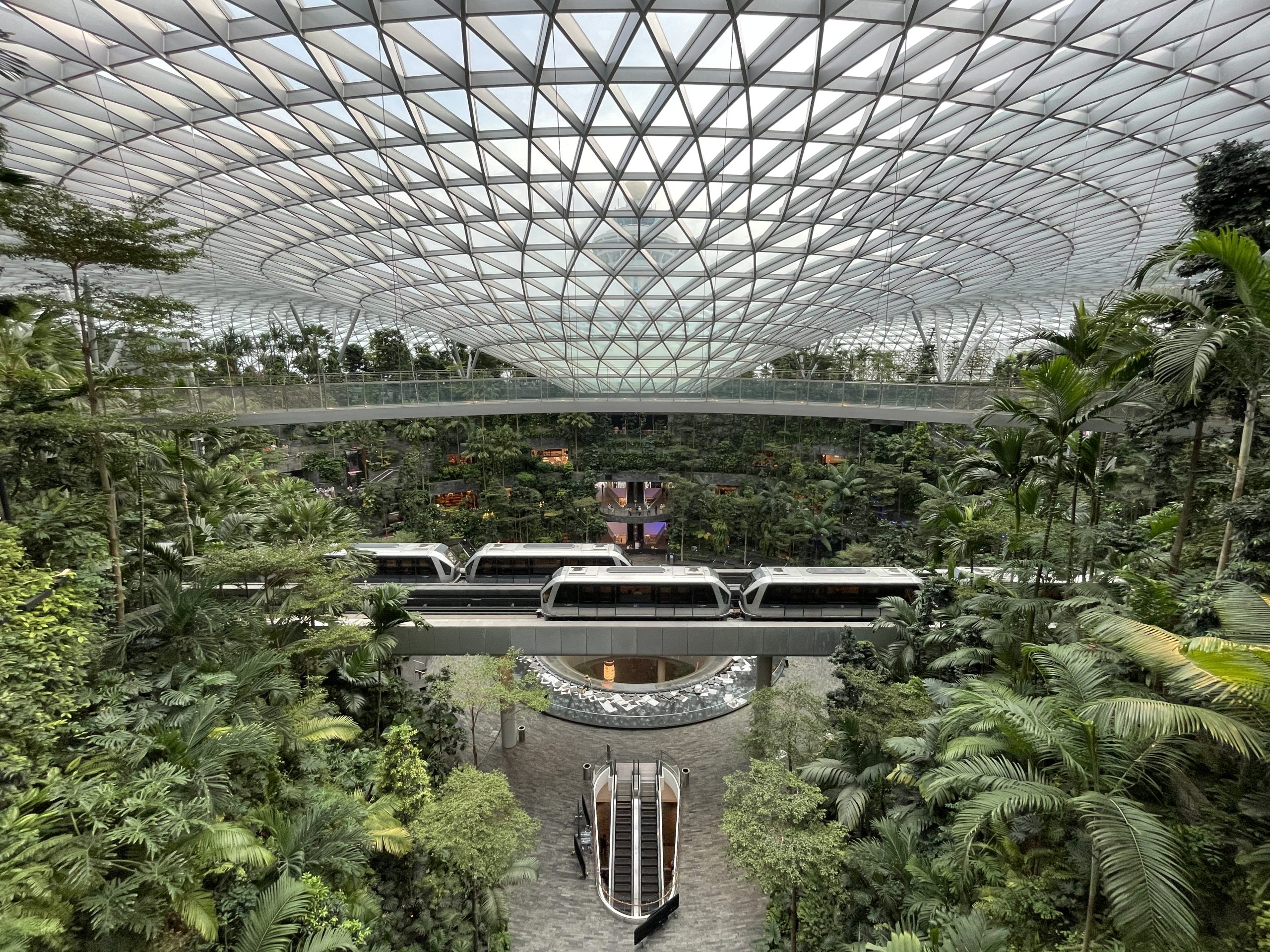
A City Where Nature Takes the Lead
Imagine a city where nature isn’t just a backdrop, but an integral part of the architecture—a place where living walls tower above bustling streets, serene indoor waterfalls enrich public spaces, and innovative designs inspire at every corner. Our Sales & Design team member, Mitch, got to experience just that on his trip through South Korea, Indonesia, and Singapore.
He didn’t just return with photos—he came back with inspiration. His journey was a glimpse into the future of urban design. So, what can we learn from these cities, and how can we apply those lessons to our work at Good Earth Plant Company?
What is Biophilic Design?
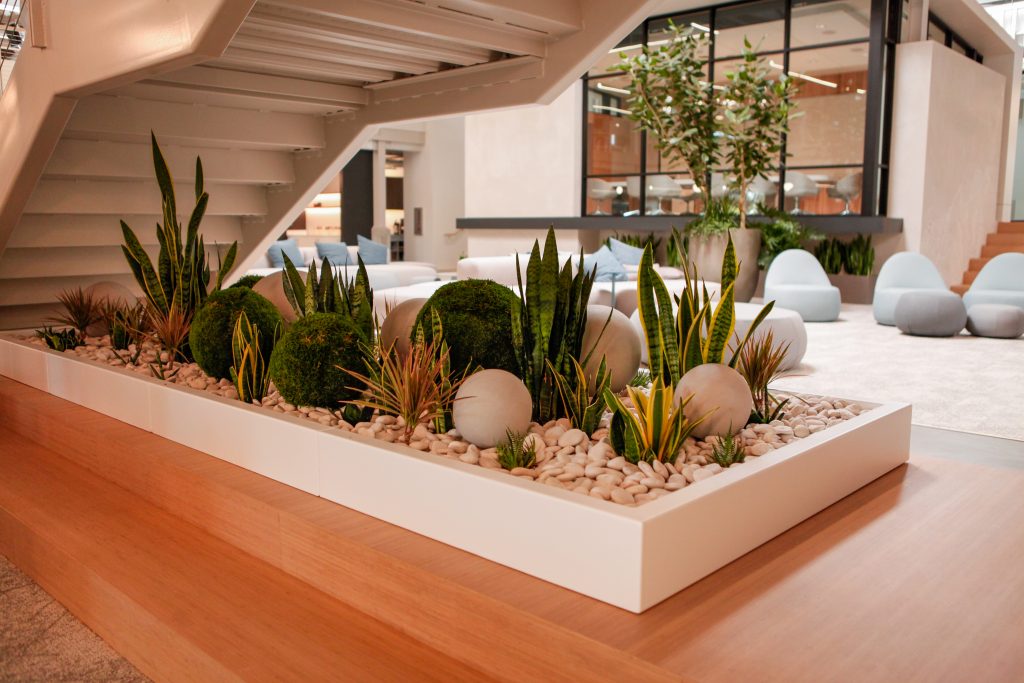
Biophilic design connects people to nature by integrating natural elements into built environments. It’s more than just a design trend—it’s a philosophy that enhances well-being, inspires creativity, and promotes sustainability. Think living walls, green roofs, cascading water features, and architecture that mimics organic forms.
At Good Earth Plant Company, we bring these principles to life by integrating greenery into workplaces, homes, and commercial properties, creating environments that don’t just look beautiful but actively improve the spaces where people live and work.
Experiencing Biophilic Design in Action
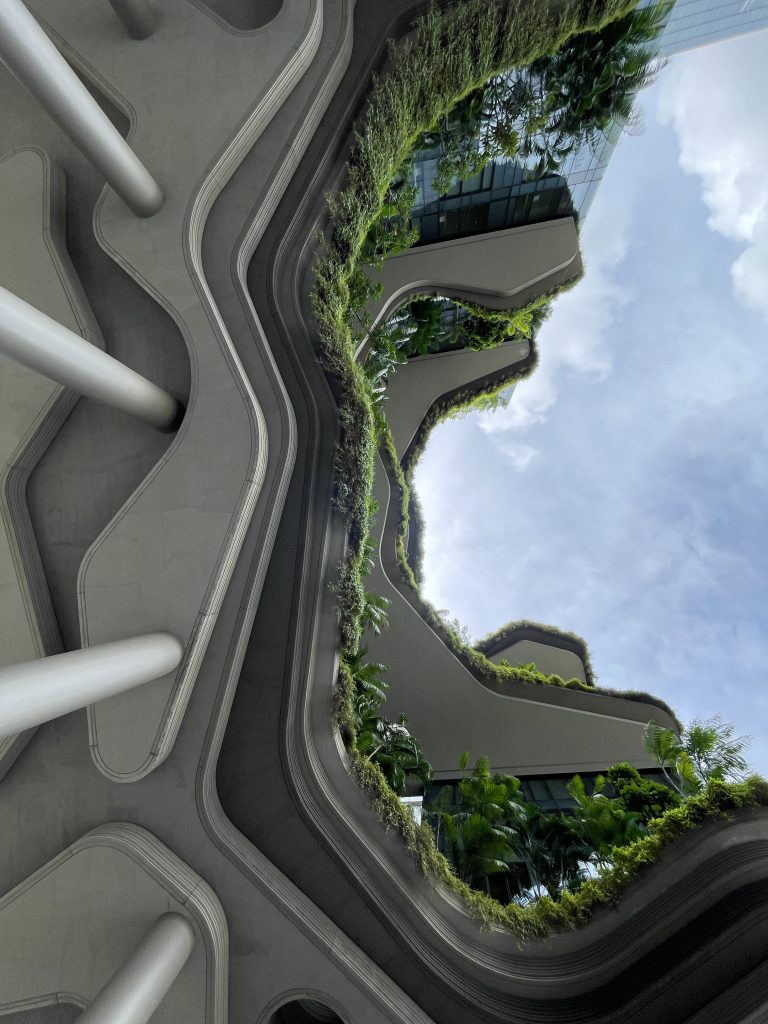
Mitch’s adventure spanned three countries, each offering unique perspectives on biophilic design. The standout? Singapore—a place often referred to as the “City in a Garden.”
Mitch mentions an unforgettable moment where he got to experience the nightly light show at Singapore’s Gardens by the Bay. Beneath the Supertrees, Mitch watched how music, lighting, and nature intertwined to create something magical. His favorite photo from the trip was taken at the ParkRoyal Collection Pickering Hotel (pictured right), capturing the hotel’s undulating terraces framing the sky in a way that feels both organic and futuristic.
These spaces didn’t just impress—they inspired. They showed what’s possible when plantscaping is done on a grand scale and paired with forward-thinking sustainability practices.
What Makes These Designs Remarkable?
With an average annual rainfall of 84 inches, Singapore harnesses its natural resources, using collected rainwater to nourish greenery throughout its streets and buildings. The city’s commitment to sustainability doesn’t stop there—it even powers biomass plants with tree trimmings and designs spaces with net-zero emissions in mind.
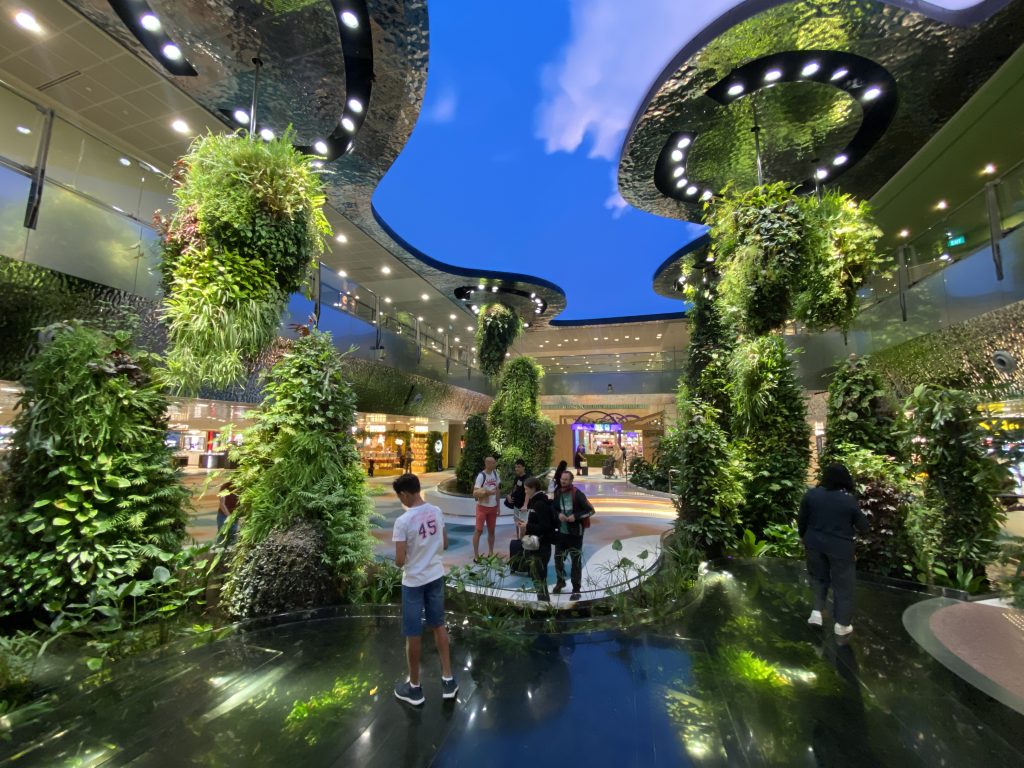
Even Singapore’s Changi Airport—often ranked as one of the world’s best—integrates biophilic elements on an astonishing scale. Picture 50+ living walls, immersive indoor waterfalls, and plant-covered structures designed to mimic natural landscapes. It’s a masterclass in how nature, technology, and architecture can come together to create something truly extraordinary.
A Challenge to Think Bigger
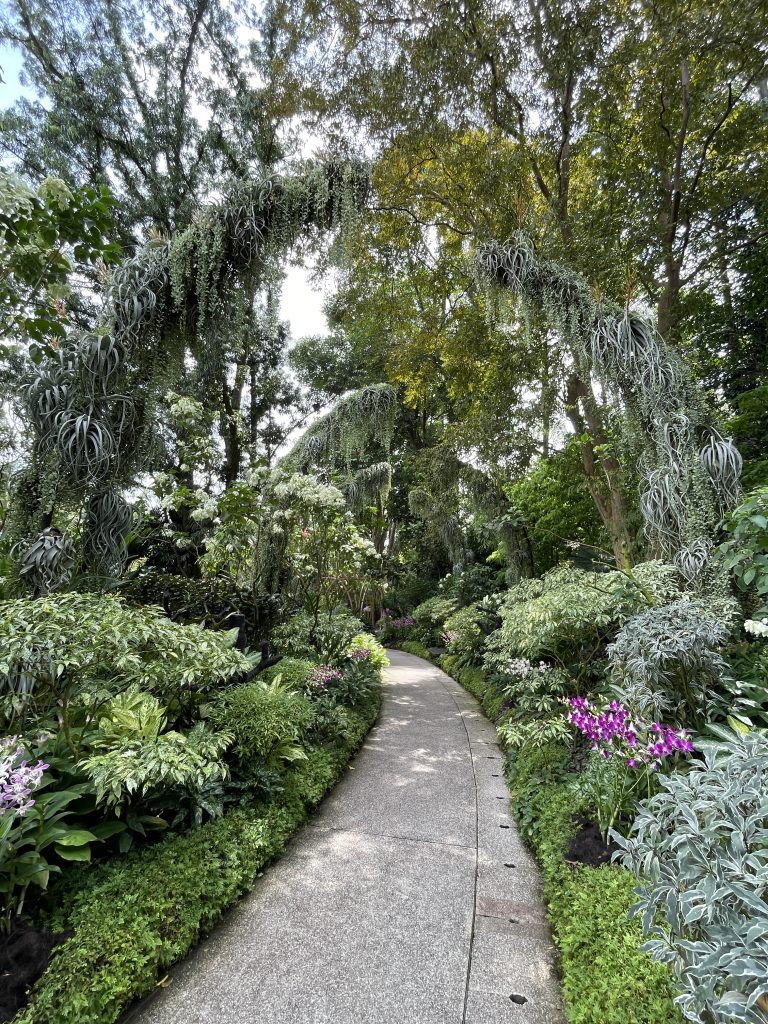
Mitch’s journey to Southeast Asia was a powerful reminder that the United States has much to learn. From daring designs to innovative sustainability practices, Southeast Asia’s biophilic architecture sets a high standard for the rest of the world.
The trip also reminds us here at Good Earth Plants the importance of designing with sustainability in mind—thinking beyond aesthetics to consider resource usage. Mitch returned from Singapore inspired to think bigger, design bolder, and create spaces that push the boundaries of what’s possible.
Biophilic design is more than just beautiful—it’s about creating environments that inspire, sustain, and connect us to nature in meaningful ways.
Inspired by Mitch’s Journey? Let’s Bring Biophilic Design to Your Space.
The breathtaking designs of Southeast Asia remind us that the future belongs to those who dare to innovate. If you’re ready to explore how biophilic design can transform your space, let’s start the conversation.


